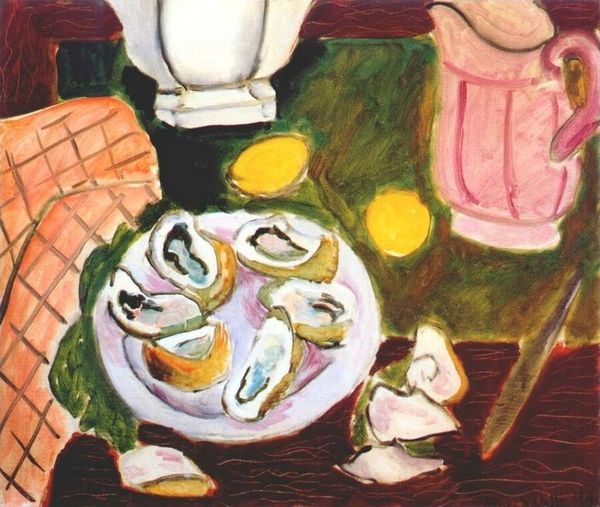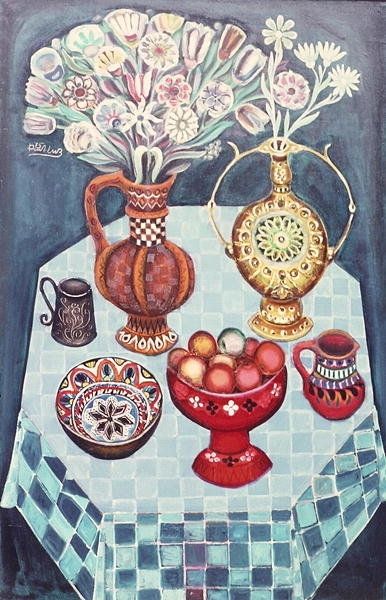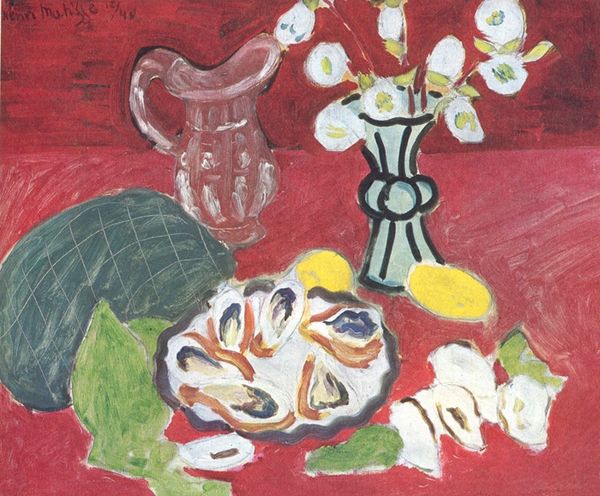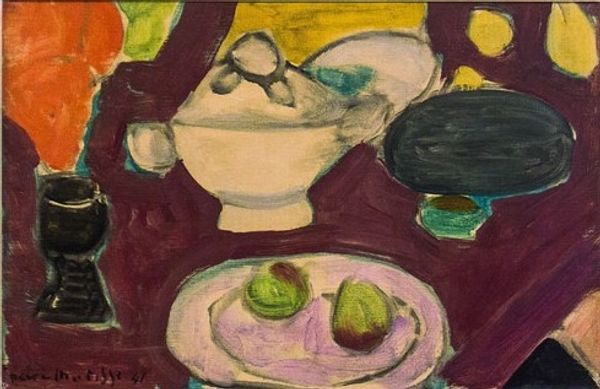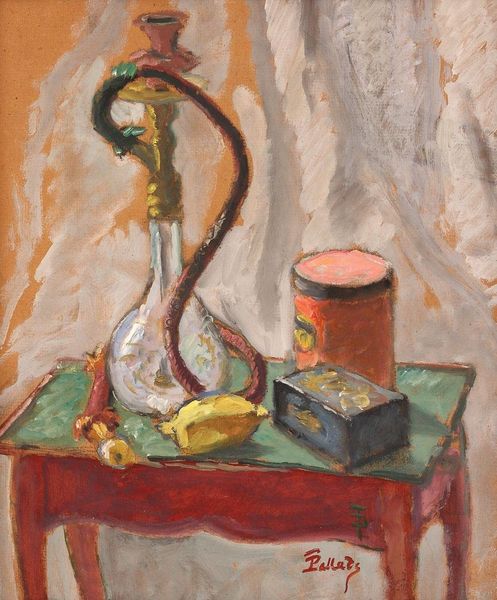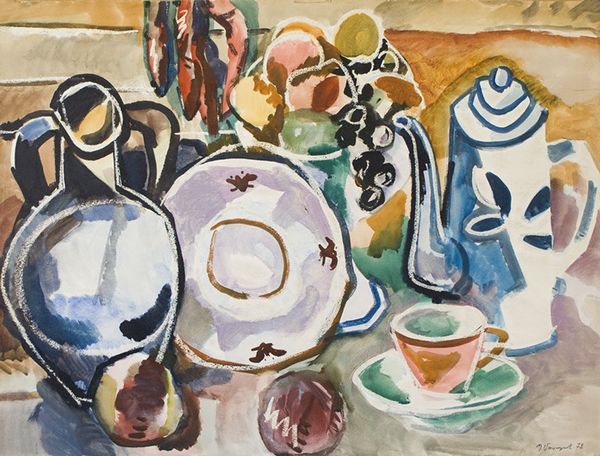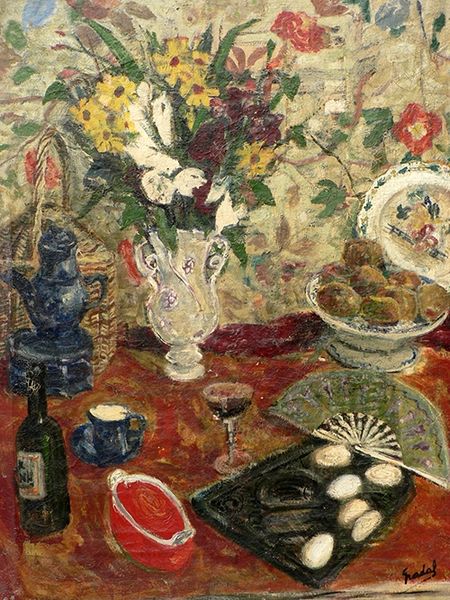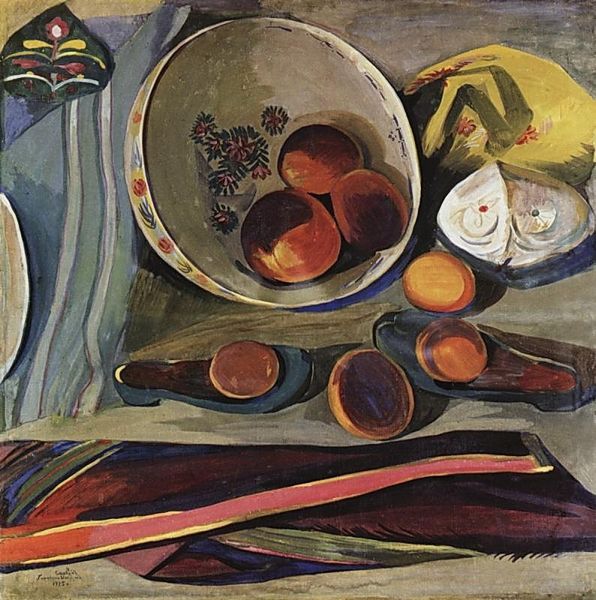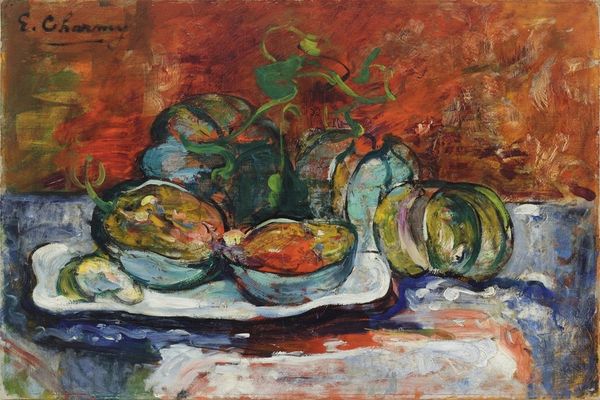
painting, oil-paint
#
still-life
#
bloomsbury-group
#
painting
#
oil-paint
#
oil painting
#
intimism
#
geometric
#
modernism
Copyright: Public domain
Curator: This is Roger Fry's "Still Life with Coffee Pot," painted in 1915. What are your first impressions? Editor: My eye is immediately drawn to the color palette – muted tones with surprising pops of pink and gold. The slightly off-kilter perspective gives it a really intimate feel, like peering into someone's private world. Curator: Fry, though known primarily as a critic, was also deeply involved in the Omega Workshops, a collective that blurred the lines between fine art and decorative arts. This piece really embodies that ethos. Look at the hand-painted ceramics. They celebrate craft. Editor: Absolutely. There's an almost defiant embrace of the handmade here. I wonder, though, what statements the inclusion of a still life could have made at the time. Early twentieth-century depictions often showed everyday domestic items – in ways that emphasized middle class virtues. Are these familiar tropes at work here, or do you feel it breaks away? Curator: That's where it gets fascinating. The Bloomsbury Group, which Fry belonged to, challenged conventional Victorian values. I see in this a celebration of the sensual, an escape from industrial production and into something tactile. Look at the almost crude application of paint; he wasn’t trying to imitate industrial precision here. Editor: The composition is intriguing, too. The patterns almost compete, drawing us in while also destabilizing any easy sense of order. This painting doesn't sit passively; it's challenging the viewer, disrupting those older modes you mentioned. It invites the gaze of, for example, someone engaged with Virginia Woolf's rendering of intimacy in modernist novels, say, where daily minutiae and the things themselves have social power. Curator: Exactly! And think about what that coffee pot represents: commodity exchange and the rituals of domesticity but filtered through Fry's focus on color, form, and handmade materials. It challenges how the viewer considers everyday objects as sites of labor. Editor: The objects themselves are loaded, aren’t they? Sugar, tea, coffee – remnants of a colonial past, brought into an intimate setting, viewed by an individual with great social awareness. A collision of intimate setting and greater implications. Curator: A collision he wanted the viewer to consider! Editor: It provides a lens through which we can interpret historical, economical, and racial dynamics—even within the confines of the home. That makes it especially relevant today. Curator: Looking at the textures in particular, there’s still more to unpack about process here. Editor: Fry and the Omega Workshops remind us how art can exist outside traditional hierarchies and engage directly with social contexts.
Comments
No comments
Be the first to comment and join the conversation on the ultimate creative platform.
